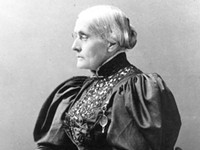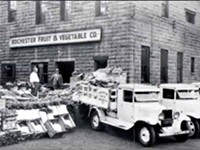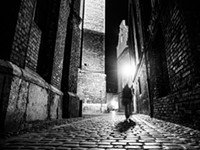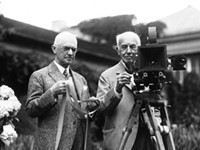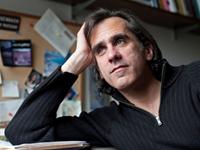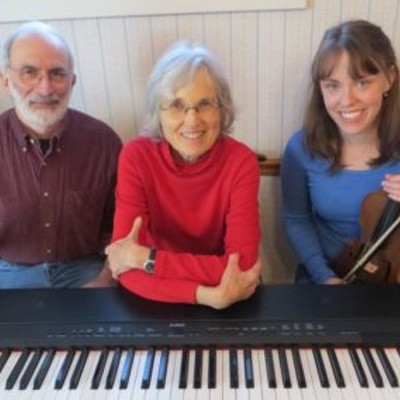[
{
"name": "500x250 Ad",
"insertPoint": "5",
"component": "15667920",
"parentWrapperClass": "",
"requiredCountToDisplay": "1"
}
]
Rochester was one of the country's first boomtowns, a place where fertile, productive farmlands provided grist for mills powered by the mighty Genesee River, and where the newly cut Erie Canal provided easy access to outside markets.
But over time, Rochester evolved from the Flour City to a photonics hub. The progression isn't intuitive, but it makes sense once the dots are connected.
World War I was Rochester industry's defining moment, says Monroe County Historian Carolyn Vacca, who also chairs St. John Fisher College's history department. Rochester was already emerging as a place of innovation, as well as an optics and precision manufacturing hub. A German immigrant named John Jacob Bausch started what would become Bausch + Lomb, and other European immigrants with expertise in lens-making came here for work. George Eastman pioneered new technologies that brought photography to the masses, William Gleason revolutionized the gear industry, and George Selden secured the first US patent for the automobile.
But with the war, many US cities began producing heavy equipment for the military. Rochester, instead, kept its focus on precision products. Bausch + Lomb made rifle scopes, binoculars, and sunglasses for troops; Wollensak, a camera company formed by a former Bausch + Lomb employee, made spotting scopes and other optical equipment for the military; and Eastman Kodak started an aerial photography flight school for the military, accelerating an emerging form of wartime intelligence-gathering.
Once the war was over, those technologies and the skilled labor that produced them adapted easily to a peacetime economy, Vacca says.
"We came out of that war still focused on innovation, new ideas," Vacca says.
Optics, imaging, and precision manufacturing businesses continued to flourish in Rochester. The Haloid Company commercialized Chester Carlson's breakthrough document-reproduction technology, birthing Xerox in 1946, for example.
And the pool of highly-skilled workers grew, too, thanks to technical training offered by the Mechanics Institute – which evolved into RIT – in areas such as mechanical drawing, machining, forging, and graphic arts. UR formed its Institute of Optics, the first optics school in the nation, in 1929, and it opened a nationally renowned laser lab in 1970. UR researchers and graduates have made countless scientific and technology breakthroughs in several disciplines.
When the Big Three began downsizing, they sold off some of their technologies to other corporations, but they also spun off some of their divisions into new standalone companies. Former workers, with expertise in a variety of disciplines, took jobs at other tech companies. Some started firms of their own.
Ultimately, that's how Rochester got to be a focal point for the photonics industry, which basically focuses on practical application of light. Technologies developed and produced here are used in sensors, imaging, lighting, and data storage. They're used in the server farms that power Amazon and Netflix, in biomedical devices, in vehicle safety and driver assistance systems, and by the military.
The Rochester region is so well-positioned in the industry that the US Department of Defense selected it to lead a nationwide effort to build a domestic photonics manufacturing industry. The selection was announced in summer 2015 and AIM Photonics, as the effort is called, is still ramping up.
In This Guide...
Speaking of...
Latest in Annual Manual
More by Jeremy Moule
-

ROCHESTER TEN
ANNETTE RAMOSAug 1, 2023 - More »


